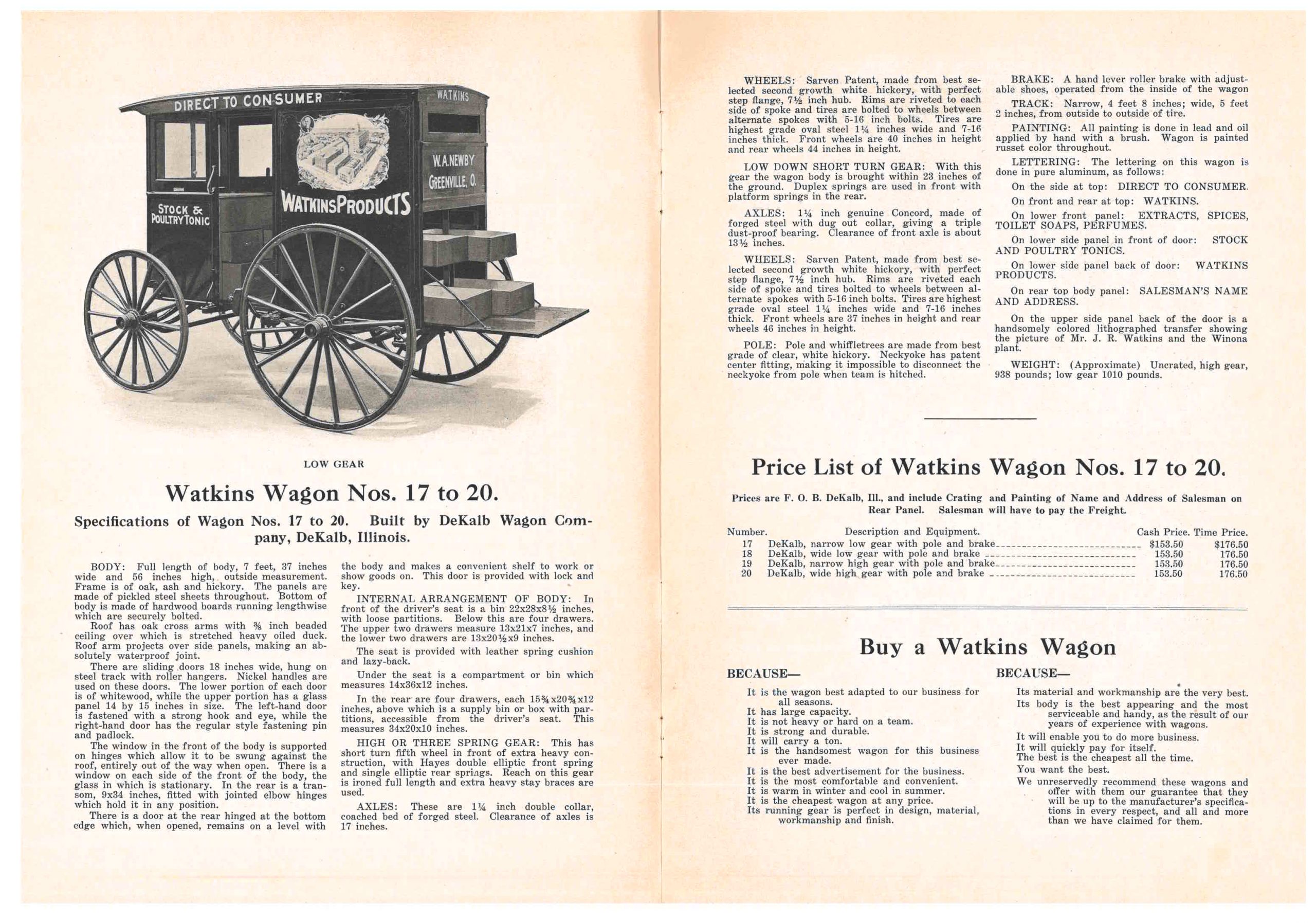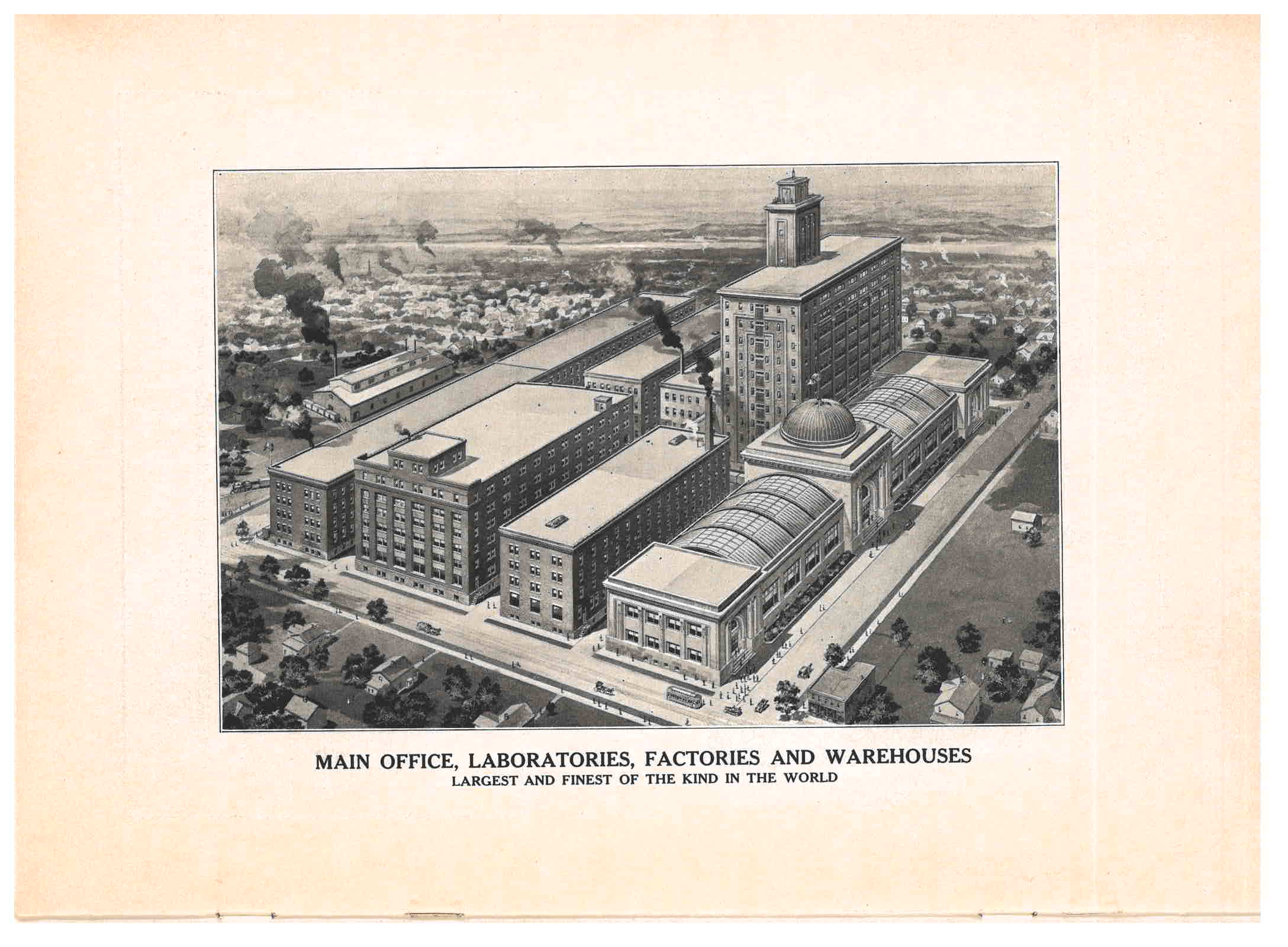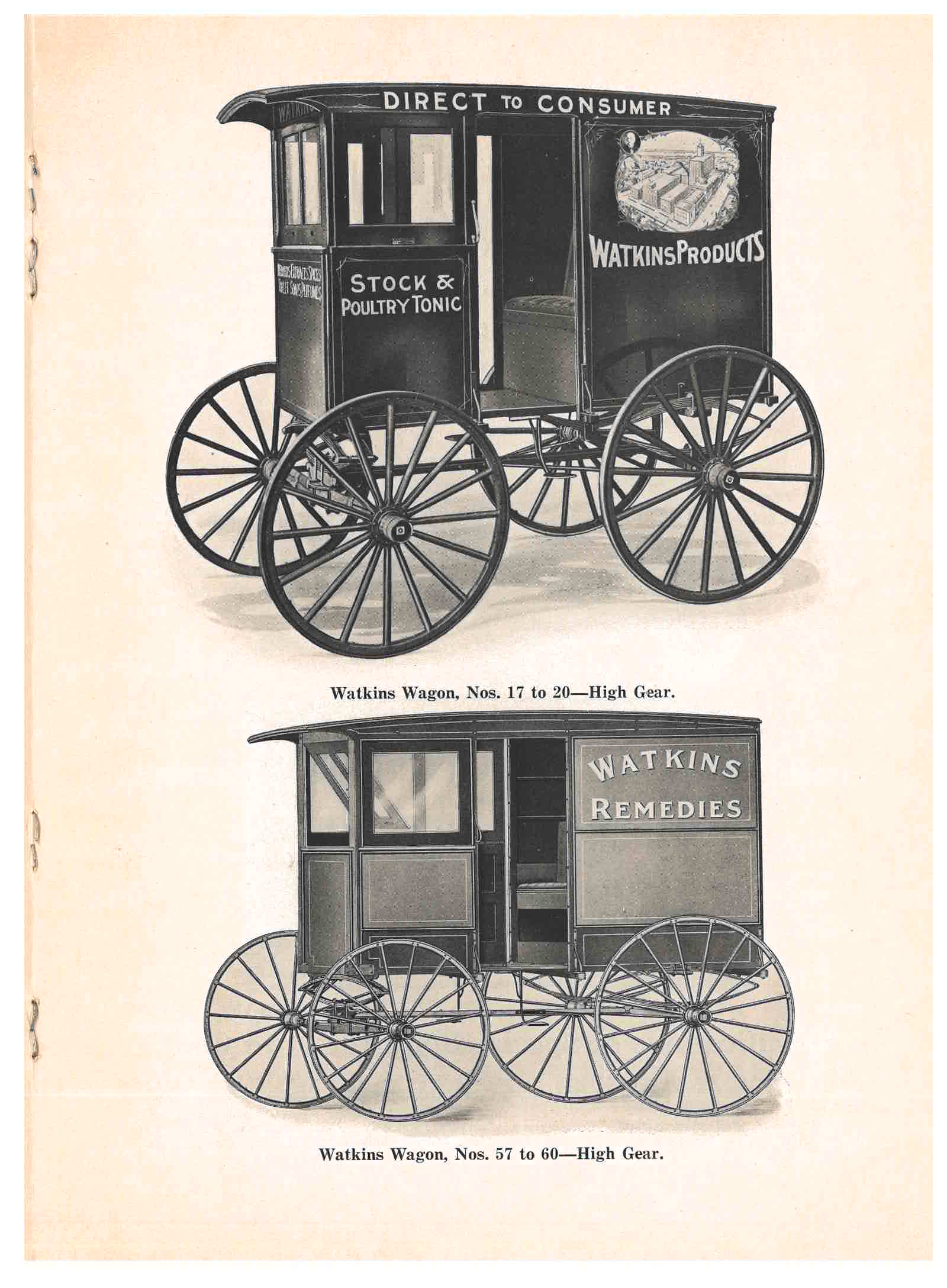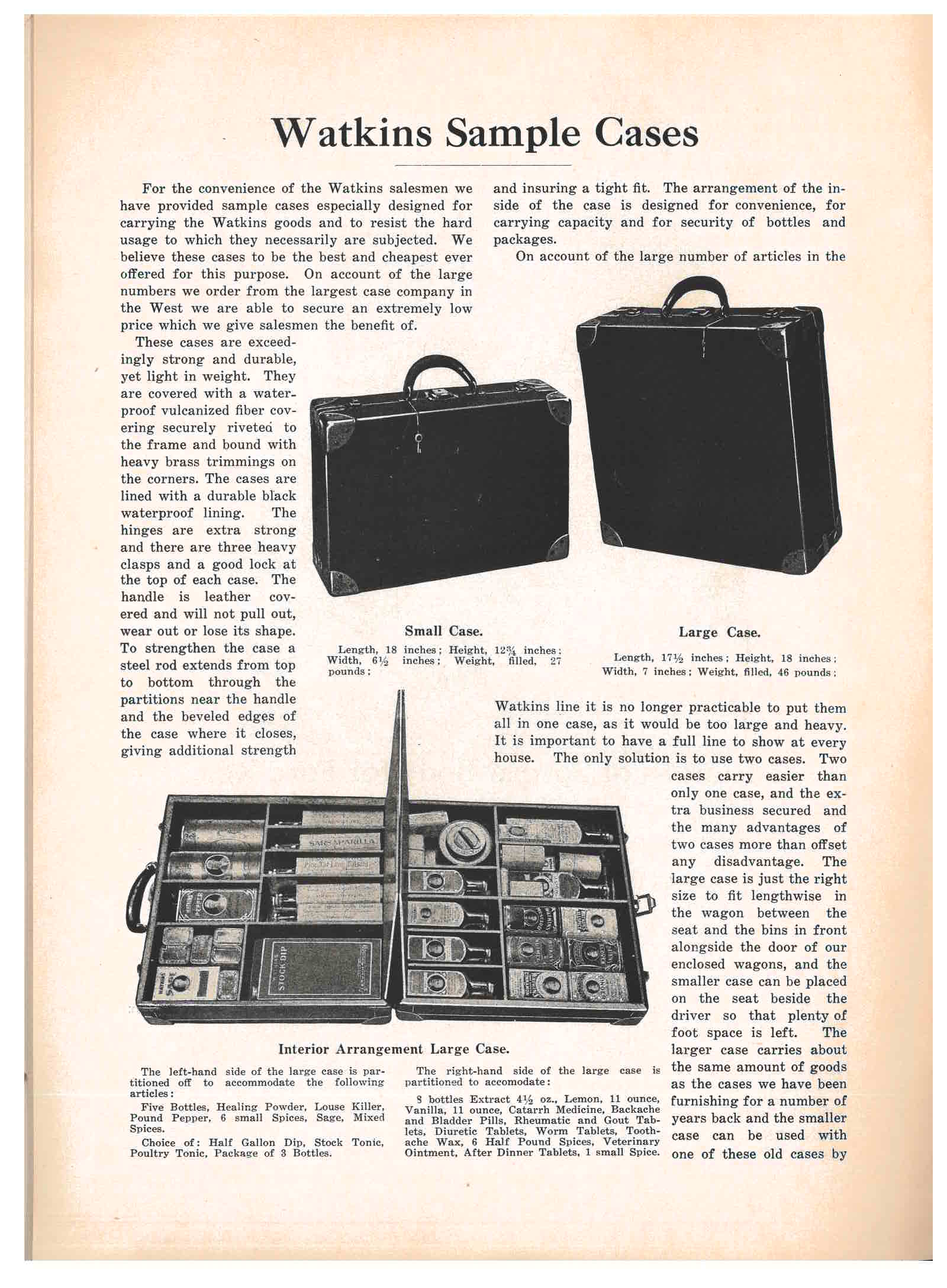How To Take a Product Line on the Road
In the early 20th Century, a knock on the door might have come from a salesperson offering the latest in cosmetics or household supplies. How did salespeople at that time display their product line? What kind of vehicle did they use? A circa 1919 J. R. Watkins Co. trade catalog offers a few ideas.
The trade catalog is titled Catalogue and Price List of Wagons (circa 1919) by J. R. Watkins Co. As might be guessed from the catalog title, it mainly illustrates wagons. However, it also includes product sample cases for Watkins salesmen to carry when visiting customers.

As the catalog points out, first impressions can make a difference. It explains, “The man who is bright and neat and who drives up with a lively team and a handsome Watkins wagon finds his battle half won.” For that reason, J. R. Watkins Co. offered their salesmen specific types of wagons which were lettered with the Watkins name, salesman’s name, and types of products sold, such as extracts, spices, perfumes, etc. This was a form of advertising, and as the catalog further emphasizes, a Watkins wagon “will quickly pay for itself.”
The Watkins wagons were built by DeKalb Wagon Co. of DeKalb, Illinois. These wagons were ordered by J. R. Watkins Co. in large quantities and then sold to the Watkins salesmen. In the catalog, J. R. Watkins Co. explains that they sold the “wagon for cash at about what it costs us ordering in large quantities.”
For salesmen who preferred not to pay by cash, another option was offered at a higher cost. This was to buy it “on time” and charge it to their account along with goods ordered. In this situation, the salesman’s sureties were also required to sign the order.
What were the benefits of buying a Watkins wagon? For one thing, these wagons provided a convenient option for displaying products. A handy shelf was created by simply opening the rear door. The hinges of the rear door were at the bottom, allowing it to open out and making it level with the bottom of the body of the wagon. This created a shelf, or display area, for showing products to customers. The wagon illustrated below, labeled as Watkins Wagon Nos. 17 to 20, shows the shelf created from the rear door. For security purposes, the door had a lock and key.

As shown in the illustration below, four drawers were located above the rear door/pull-out shelf. Above those drawers, there was a supply bin. It was accessible from the driver’s seat. Another compartment or bin was located under the driver’s seat while four additional drawers and a bin were situated in front of the driver’s seat.
The catalog mentions the Watkins wagon will “quickly pay for itself.” How was that possible? Perhaps by using the wagon itself as a means for advertising. This was accomplished through custom lettering on the exterior of the wagon.


The wagon also advertised the variety of Watkins products sold by their salesmen. Painted on the wagon’s lower front panel were the words, “EXTRACTS, SPICES, TOILET SOAPS, PERFUMES” while “STOCK & POULTRY TONIC” was painted on the lower side panel by the door. The Watkins wagon below (bottom), labeled as Watkins Wagon, Nos. 57 to 60, is lettered with “WATKINS REMEDIES” on its side. Overall, the wagon was painted in russet, a reddish-brown color.

Its exterior was covered with a waterproof vulcanized fiber trimmed with brass on each corner while the interior was fitted with black waterproof lining. The cases had a leather covered handle, three clasps to open and close, and a lock.


Catalogue and Price List of Wagons (circa 1919) by J. R. Watkins Co. and other trade catalogs by J. R. Watkins Medical Co. are located in the Trade Literature Collection at the National Museum of American History Library.
